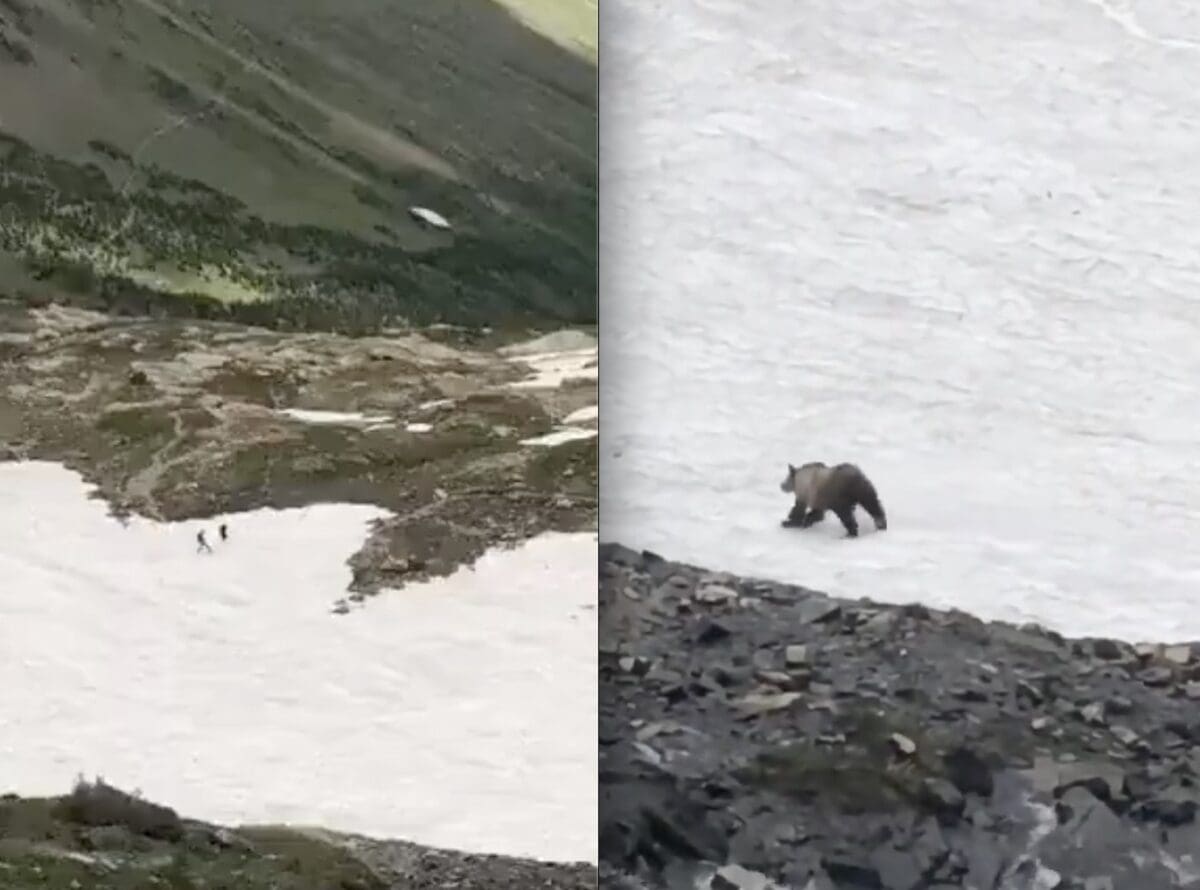Glacier National Park is traditionally referred to as Ya·qawiswit̓xuki by the Kootenai, a term that means “the place where there is a lot of ice”. 80 glaciers filled what would eventually become Glacier National Park at the end of the Little Ice Age in 1850. As of 2015 only 26 named glaciers that met a size criteria of 0.1 km² remain.
While many visitors come to the park hoping to see active glaciers, most of the park’s glaciers are hidden high along the Continental Divide covered by semi-permanent snowfields. Yet hikers may come across plenty of snow even on the hottest days and should be prepared to travel on slippery conditions or be willing to turn around if they don’t have the proper gear. Travel on snow is treacherous in the best of conditions but these two hikers were forced to turn and run on a slippery snowfield as a grizzly bear came barreling downhill towards them.
A grizzly trying to get its BEARings!
— Glacier National Park (@GlacierNPS) July 24, 2019
This bear found out how hard it is to regain balance on snow. Crossing snow & ice can lead to serious injuries. Consider turning around instead of crossing a snow field, especially if you don’t have the proper gear. Video Cred: Jacob Hartman pic.twitter.com/DYjPWr3FGE
Fortunately the two understood that an approaching grizzly meant danger and were able to get away safely before it got too close. In Glacier National Park visitors are required to give bears and wolves at least 100 yards of space (300 feet). Violators of that space could face legal trouble with the park. Hikers should call out and clap at regular intervals while moving throughout the park, staying in groups to keep bears away. The park also encourages visitors to avoid running and always carry bear spray in an accessible location.
Bear Encounter Guidelines In Glacier National Park:
If you encounter a bear inside the minimum recommended safe distance (100 yards; 91 m), you can decrease your risk by following these guidelines:
If a bear approaches in a defensive manner (appears agitated and/or charges), stop. Do not run. Talk quietly to the bear. Prepare to deploy your bear spray. If contact appears imminent and you do not have bear spray, protect your chest and abdomen by falling to the ground on your stomach, clasp your hands around the back of your neck, and leave your pack on for protection. If the bear attempts to roll you over, try to stay on your stomach. If the attack is defensive, the bear will leave once it recognizes you are not a threat. If the attack is prolonged, FIGHT BACK!
If a bear or other animal is moving in your direction on a trail, get out of its way and let it pass.
If you can move away, do so. If moving away appears to agitate the bear, stop. In general, bears show agitation by swaying their heads, huffing, and clacking their teeth. Lowered head and laid-back ears also indicate aggression. Bears may stand on their hind legs or approach to get a better view, but these actions are not necessarily signs of aggression. The bear may not have identified you as a person and may be unable to smell or hear you from a distance. Help the bear recognize you as a friendly human.
Talk quietly.
Do not run! Back away slowly. Stop if it seems to agitate the bear.
Use your peripheral vision. Bears may interpret direct eye contact as threatening.
Continue to move away as the situation allows.
If a bear appears intent on approaching you, your group, or your campsite in a non-defensive manner (not showing signs of agitation), gather your group together, make noise, and try to discourage the bear from further approaching. Prepare to deploy your bear spray. If you are preparing or consuming food, secure it. DO NOT LET THE BEAR GET YOUR FOOD!

